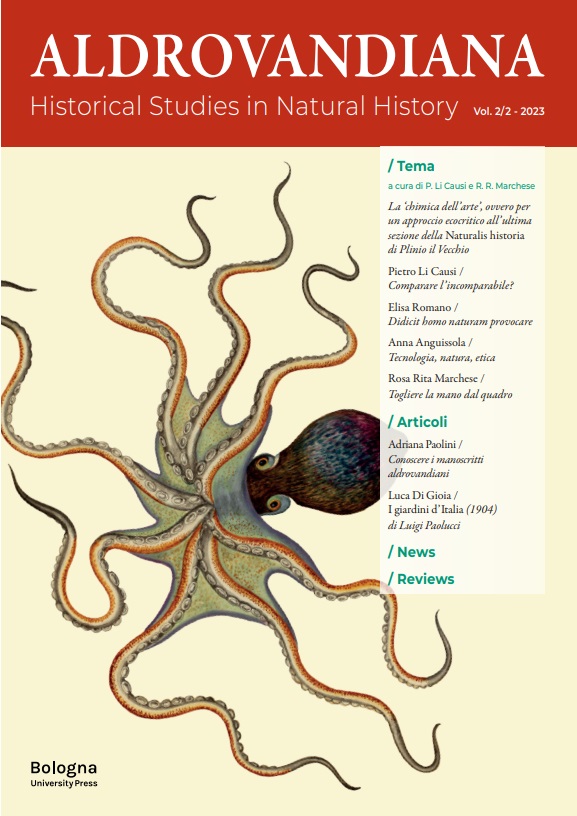I giardini d’Italia (1904) di Luigi Paolucci. Edizione, studio e commento. Parte I: “Quel supremo ornamento”
Published 2023-12-22
Keywords
- Italian Risorgimento,
- History of gardening,
- Ornamental plants
How to Cite

This work is licensed under a Creative Commons Attribution 4.0 International License.
Abstract
Luigi Paolucci from Ancona (1849–1935) embodies an ideal model of the scholar and naturalist made possible by the intellectual atmosphere in late 19th–century Italy. Gathering and cataloging nature and its “specimens” in a regional museum, placing them according to their precise taxonomic method, inspired Paolucci to give tangible substance to a country that, unknown primarily to itself, had to begin to see itself as one. “The Gardens of Italy”, a work dated 1904 but never published until now, is a lengthy exploration that eloquently starts from Roman gardens, extending to reach the threshold of the 20th century, where the “dream of the microcosm” (to use a phrase by Pierre Grimal), in the hands of gardeners, has become the delirium of the macrocosm, where origins have been lost and where the natural blends with the hybrid: it is precisely from this disorder, from this “confusion”, that Paolucci sets out. Reassigning garden and park plants that adorn the Italian soil to their natural families is, for the naturalist, not only a moral duty, as it was for Linnaeus (his role model, along with Darwin), but also a new claim of ownership over the world.
